[Crossposted from CharlesMcCain.com]
On 19 May 1941 the German battleship Bismarck (below left), then the largest and most powerful battleship in the world, put to sea on a commerce raiding cruise accompanied by the heavy cruiser Prinz Eugen (below right). The movement of the two ships was quickly discovered by the British and on 20 May 1941 an RAF Spitfire reconnaissance aircraft spotted the two ships in a fjord in Norway.
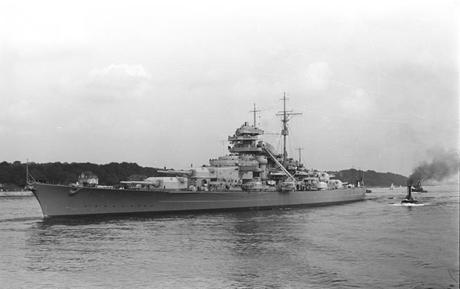
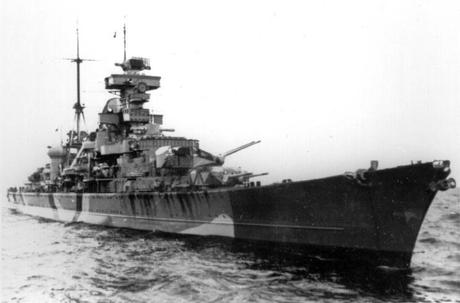
The battlecruiser HMS Hood (below left) was ordered to sea to intercept the Bismarck. She was accompanied by the battleship HMS Prince of Wales (below right). There is critical importance here in the nomenclature of “battlecruiser” vs “battleship.” HMS Hood was based on a design for a “battlecruiser” created before the First World War. A battlecruiser had the armament of a battleship but not the heavy armor. Therefore, a battlescruiser was faster than a battleship of that era. Battlecruisers were not designed to engage battleships of that era.
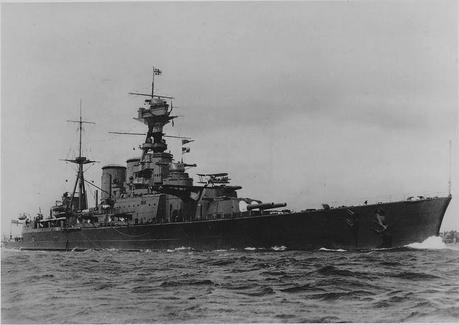
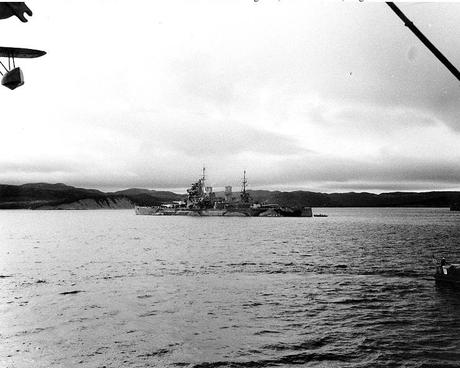
Hood wasn’t actually commissioned until 1919 when World War One was over. Although her design was changed as she was being built, she had two major defects which the Royal Navy knew about before she was even launched: her deck armor over her main magazines was totally inadequate – less than three inches vs more than five inches on the battleship Prince of Wales. Second, HMS Hood‘s main powder rooms were badly designed and susceptible to flashbacks – that is if the ship was hit in a certain place, the explosion would follow the path of the powder hoist, hit the powder magazine, and the entire ship would explode. This is exactly what happened to the HMS Hood when she encountered the Bismarck and was hit by Bismarck‘s highly accurate gunnery.
The Battle of the Denmark Strait, which is what is described below, is one of the few duels between capital ships in history. Also, no aircraft were involved.
So desperate were the British to sink the Bismarck that the Prince of Wales was ordered to sea before she was even completed. There were over forty civilian workers from the Vickers-Armstrong Company aboard the ship working on serious teething problems being experienced by the main batteries. The flotilla was commanded by Admiral Lancelot Holland.
0545 24 May 1941 – Bismarck and Prinz Eugen encounter the battlecruiser HMS Hood and the battleship HMS Prince of Wales and the Battle of the Denmark Strait begins. At 0552, HMS Hood fires the first shots of the battle. Prinz Eugen and Bismarck respond in kind. Eight minutes later, at 0600, a shell from the Bismarck hits HMS Hood in her aft powder magazine.
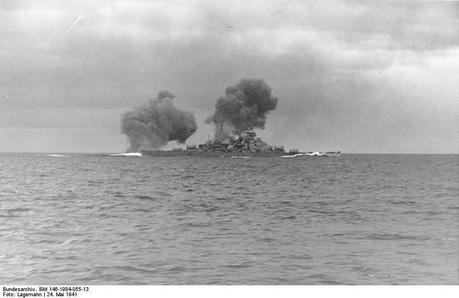
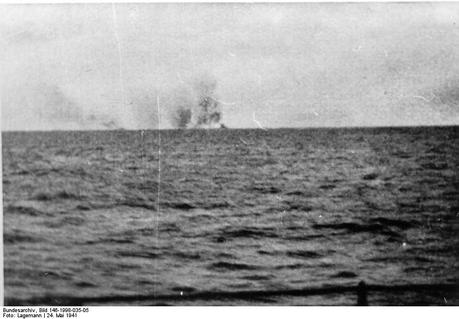
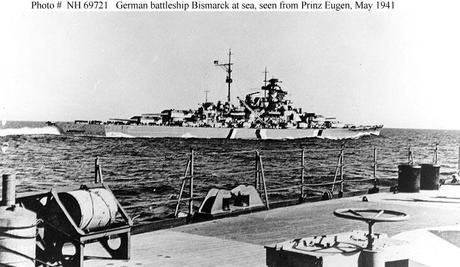
Prince of Wales made smoke and turned away. Shortly afterwards all four three of her main battery turrets stopped functioning and the guns would not traverse. Prince of Wales was able to escape.
The German squadron was commanded by Admiral Lutjens. Why he did not pursue and sink the Prince of Wales, which he certainly could have done, remains a mystery.
Japanese aircraft sank the Prince of Wales on 10 December 1941 while she was patrolling off Singapore.
The last of HMS Hood‘s survivors died in 2008.
The Daily TelegraphOctober 5th, 2008
As an 18-year-old Flag-Lieutenant’s messenger, Briggs was on Hood‘s compass platform when a shell from Bismarck hit the ship between center and stern, penetrated the deck, exploded and touched off the ammunition in the four-inch and 15-inch magazines. According to one witness, the column of flame generated was “four times the height of the mainmast”.
Ted Briggs himself recalled that he was lifted off his feet and dumped headfirst on the deck: “Then she started listing to starboard. She righted herself, and started going over to port. When she had gone over by about 40 degrees we realised she was not coming back.” There was no time, or need, for an order to abandon ship. Hood sank within three minutes…
…Briggs was sucked down beneath the sea. He later wrote: “I had heard it was nice to drown. I stopped trying to swim upwards. The water was a peaceful cradle – I was ready to meet my God. My blissful acceptance of death ended in a sudden surge beneath me, which shot me to the surface like a decanted cork in a champagne bottle. I turned, and 50 yards away I could see the bows of the Hood vertical in the sea. It was the most frightening aspect of my ordeal, and a vision which was to recur terrifyingly in nightmares for the next 40 years.”
Briggs swam clear of the stricken ship and, when he looked back, she had gone.
Only two other men – Midshipman William Dundas and Able-Seaman Bob Tilburn – survived. All three clung to small rafts for nearly four hours, singing Roll Out the Barrel to stay awake; even so, they were close to death from hypothermia when they were picked up by the destroyer Electra. Their rescuers could not believe that there was no sign of anyone else from Hood, alive or dead…
[UPDATE - HT to the reader who saw the story cross-posted in the Military History Digest for identifying the turrets slip.]
